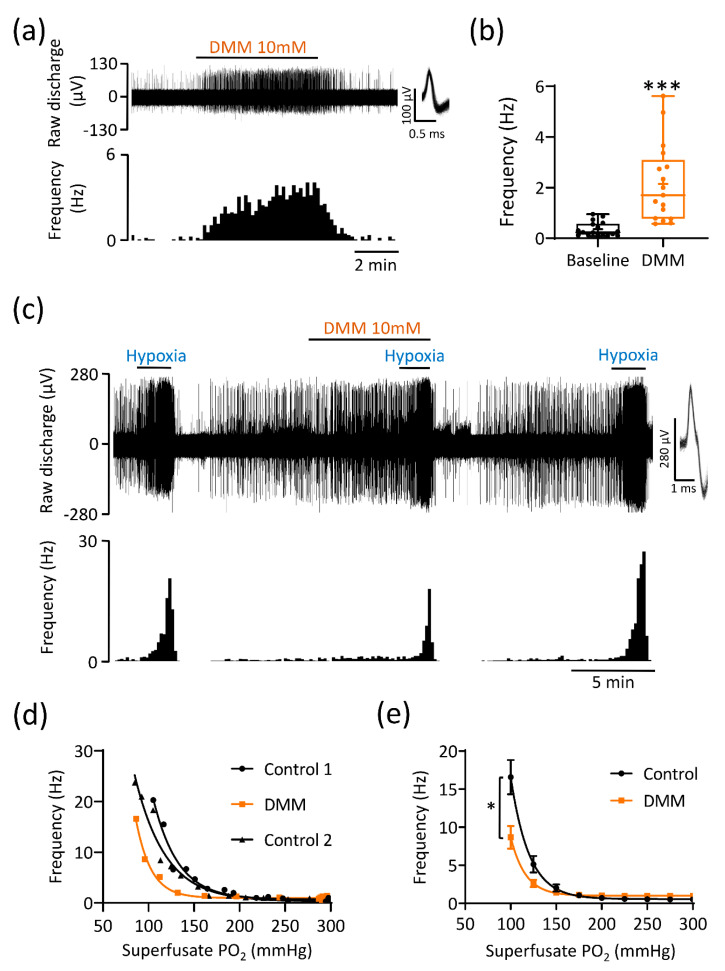Figure 4.
Inhibition of mitochondrial succinate metabolism causes basal carotid body (CB) chemoafferent excitation but partially attenuates the response to hypoxia. (a) Example chemoafferent response to 10 mM dimethyl malonate (DMM), an inhibitor of mitochondrial succinate dehydrogenase (complex II). Raw voltage (upper) is shown along with frequency histograms (lower). Inset: overdrawn action potentials. (b) Mean steady state frequency caused by DMM (n = 17 fibres, N = 10 animals). Data presented as box-whisker plots with median, mean (shown as +), the box representing the interquartile range and the whiskers extending to outliers. Single points represent individual fibres. *** denotes p < 0.001 vs. baseline, paired t-test. (c) Example chemoafferent response to hypoxia in the presence and absence of 10 mM DMM. (d) PO2-response curves from a single experiment corresponding to the example shown in (c). (e) Mean chemoafferent hypoxic response curves for paired control and 10 mM DMM (n = 8 fibres, N = 5 animals). Data presented as mean ± SEM. * denotes p < 0.05 vs. control, two-way repeated measures ANOVA.

